Fashion collection display inspired by art and costume history
18/03/2021 2021-03-18 6:58Fashion collection display inspired by art and costume history
A fashion collection inspired by art and costume history was conceived by the students of the Post-Graduate Diploma in Fashion Design and Business Management (PGDFDBM) July 2020 batch of JD Institute of Fashion Technology, Bangalore. Presented as part of their Internal Term Project jury on the 24th of February 2021, the display was a collective understanding of all the modules of Term I. Following a brief that directed them to create a six-look fashion collection, the students had to demonstrate a deep understanding of their chosen inspiration, brainstorming, element generation, visual boards, motif/pattern exploration, surface/texture explorations, sketches/ideations, rendering of the final six design with details (front and back) and flats drawings of all the sketches. The presentation of their work demonstrated hard work, resilience, growth, ingenuity and perseverance.
Bani Thani; Indian Miniature Painting (Akshatha L.N. Rao, Wilsha Maria Quadras):
Captivated by the rich narration, detail and intricately crafted processes of the Indian Miniature Paintings, Akshatha and Wilsha were drawn towards a Rajasthani miniature painting of Kishangarh’s Bani Thani, who was the poetess of Raja Samant Singh’s (1748–1764) court, and later the king’s mistress. Born Vishnupriya, who later adopted the stage name Bani Thani which means ‘the decked-out lady’, Akshatha and Wilsha were inspired by the historical and cultural significance of this enigmatic character, as a representation of what power and beauty symbolises in the historical and political context of an Indian court. Belonging to the Kishangarh school of art, the painting of Bani Thani is represented in the school’s notable characteristics such as the stylised and elaborate facial features. These exaggerated features were the starting point of the design process; lines, shapes and textures were extracted from the garment and features of the painting to conceptualise the silhouette and design elements of the collection. Being a representation of romance and passion, Bani Thani is identified as an example of Shingara-rasa or romantic love; and Akshatha and Wilsha felt this expression of sensuality apt to be articulated into an evening gown collection. Their final line-up features six looks, which incorporate elegant silhouettes with textile developments of hand-painting and pleats, along with bead and sequin embroidery that celebrate the legendary Bani Thani.
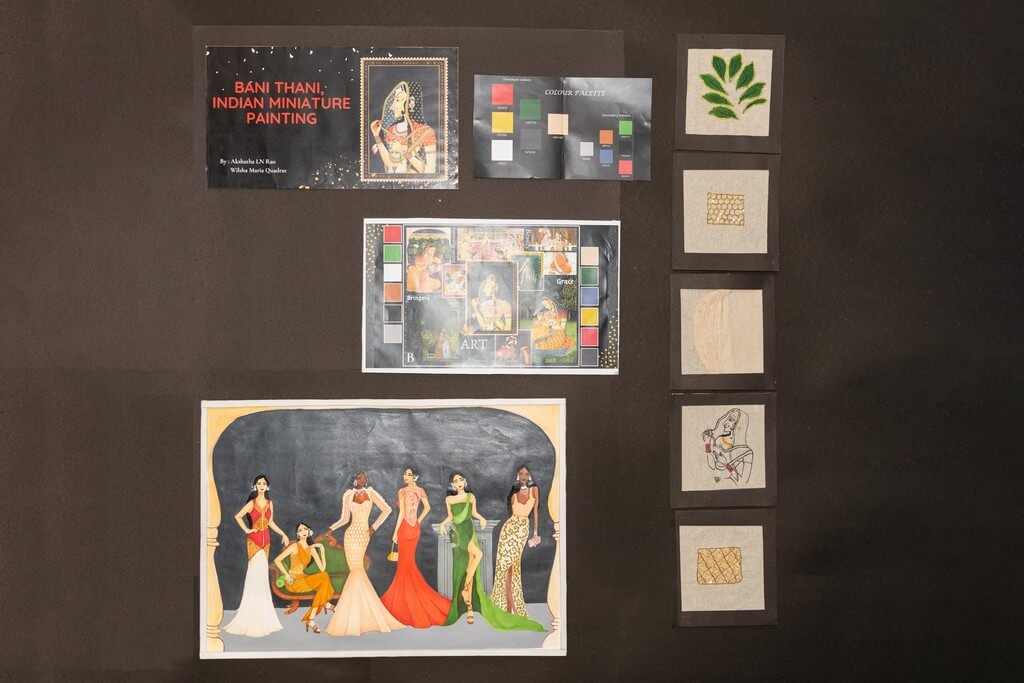
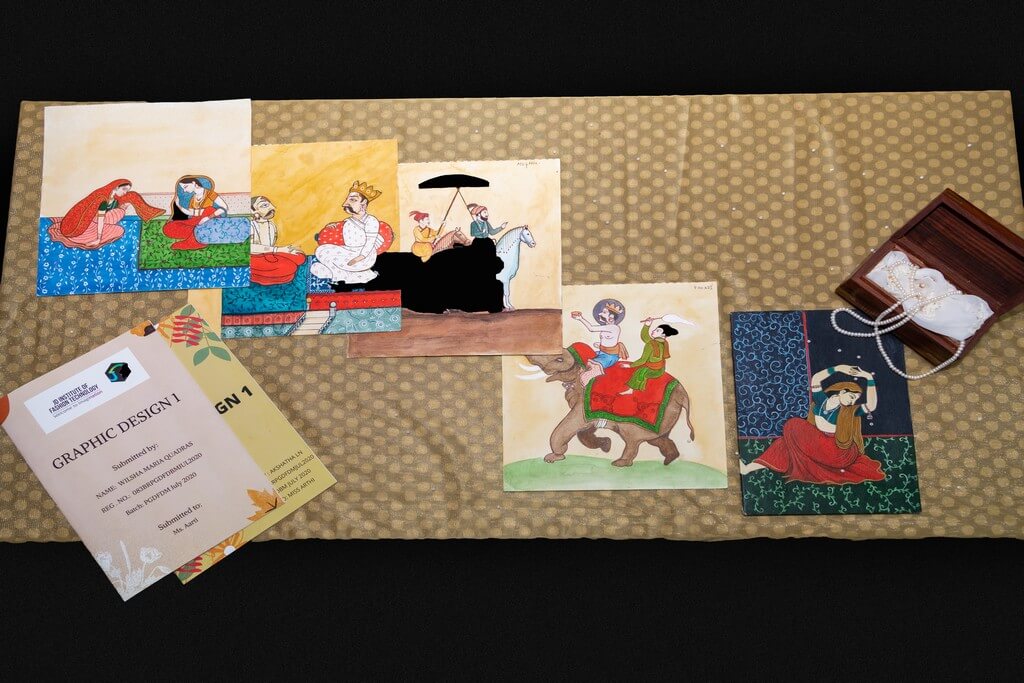
Hieroglyphs (Kajal Jain, Samaira Singh):
Fascinated by the pictorial way of communication and its methodology of script-writing, Kajal and Samaira were inspired by the Egyptian hieroglyphs. Consisting of various characters including birds and animals as its ‘alphabets’, these hieroglyphs were sculpted on relief. The team’s design process included extracting shapes, colours and textures from these ancient scripts and using them to articulate through textile techniques. Fabrics such as muslin were put under conditions of bleaching and burning to manipulate them into pieces of ‘relics’ and embroidery techniques were explored on these surfaces. The application of leather was also investigated extensively through techniques such as appliqué and patchwork. The team translated this inspiration into a ready-to-wear womenswear collection that enquired ways of translating history onto daily-wear.
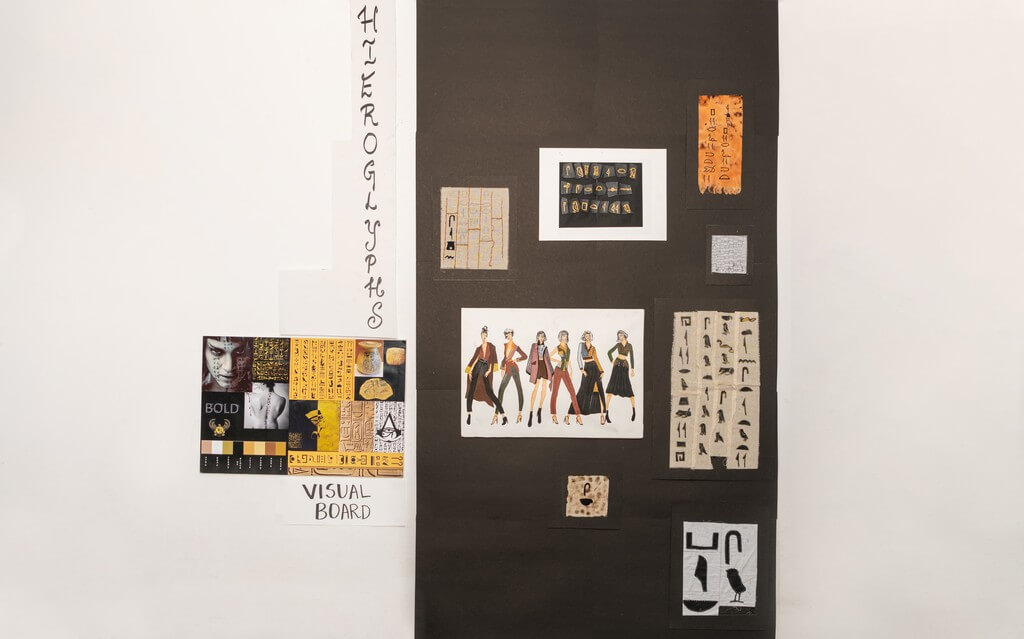
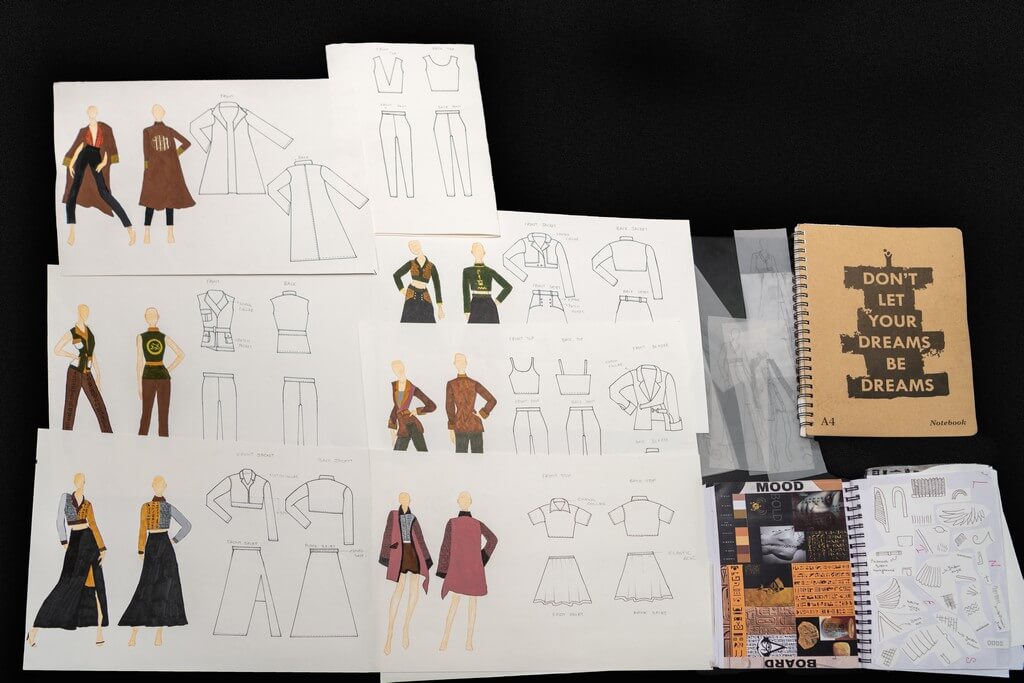
Mayan Calendar (Monica Mahala, Tharina Firdose):
The Mayan Calendar represents history, culture and mythology, and this is what fascinated Monica and Tharina; an ancient yet sophisticated mechanism of determining and predicting the past, present and the future. Composed of three different calendars that determine hours and years, each calendar is represented by a god, which the team had extracted and represented through ‘fragmented’ embroidery techniques. “Somewhere it’s elegant”, says Monica when asked about the reason why they had explored with ‘incomplete’ tactile surface techniques; “with the earthy and natural tones of the relic it brings out the beauty that exists in the worn-out”. Taking references for silhouette from bohemian subcultures because of its representation of the earthy tones, Monica and Tharina conceptualised a women’s ready-to-wear collection that celebrates the spirituality of the bohemian and the ancient mythology.
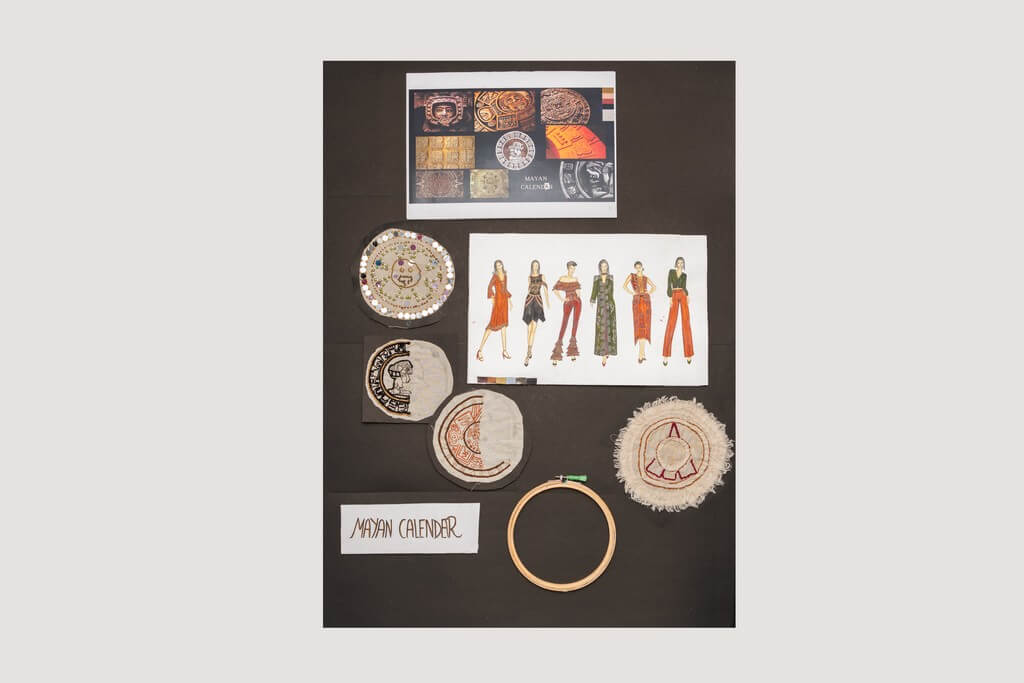
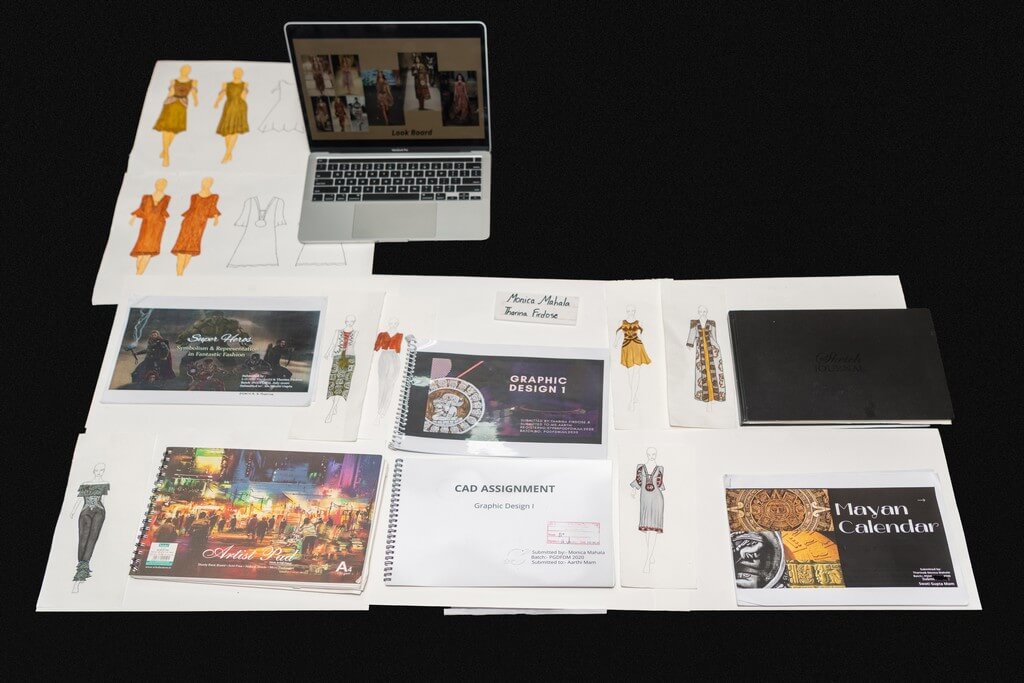
Buland Darwaza (Nikitha N., Surpriya P.):
Nikitha and Supriya were inspired by the architecture of the Mughal period in India; its grandeur and how it has informed the history, culture, art and craft of today. Determining the Buland Darwaza as its prime example, the team derived design elements especially from its geometric and rigid structure to come up with an avant-garde womenswear fashion collection. Exploring various textile manipulation techniques such as origami and pleating to represent the steps and the symmetry of the monument; along with surface development techniques such as patchwork, beadwork and embroidery, the team extensively explored laser-cut techniques to articulate the inscription and carving on textile development. The final result was a collection that paid homage to the red and brown sandstone of this architectural masterpiece that celebrate its grandeur through silhouettes and textiles that enquire the contemporary context of heritage.
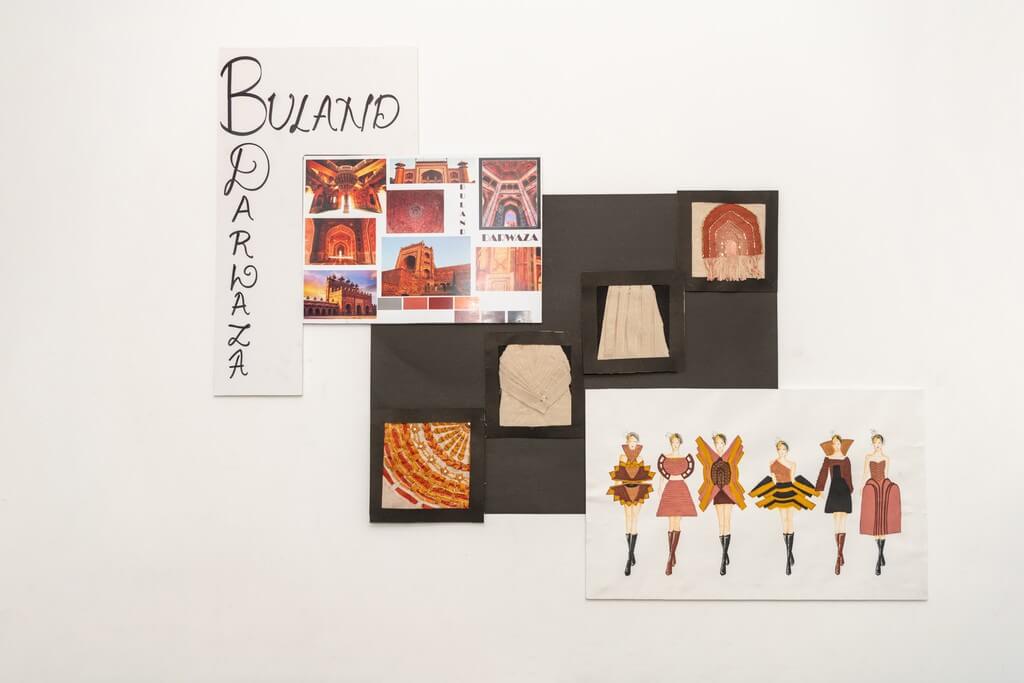
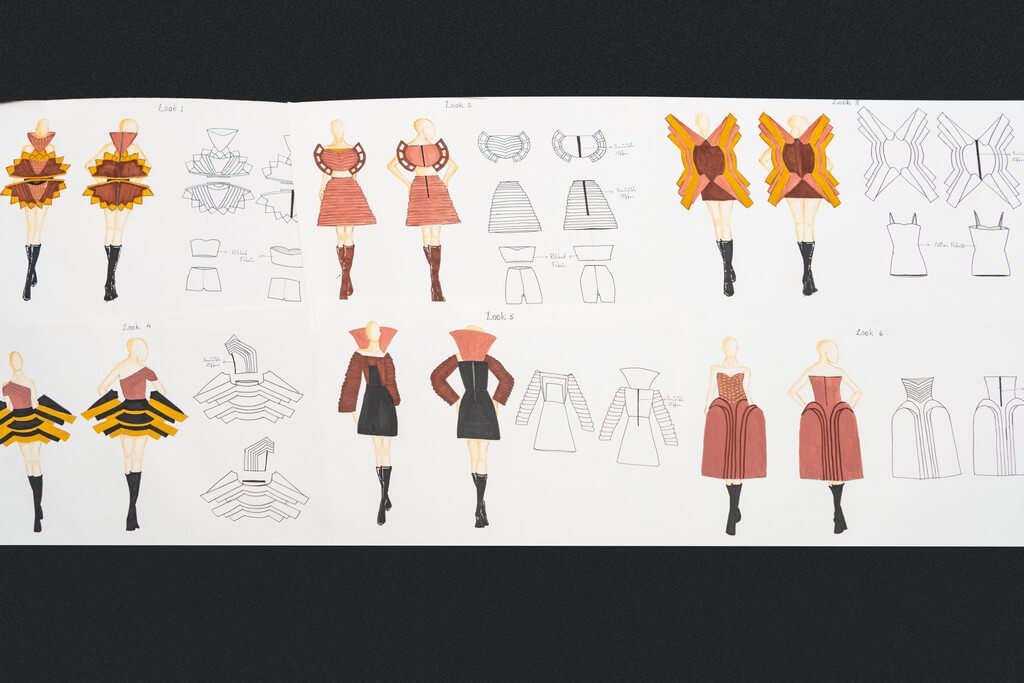
Stained-glass (Nimmi Elsa Alex, Shanmugapriya A.):
Inspired by the prominence of stained-glass during the revival of the Gothic period, Nimmi and Shanmugapriya were inspired by the distinct character of this decoration and architectural element that flourished during the Christian era. Fascinated by how religious spaces informed aesthetic and architectural developments, the team explored its abstract and geometrical imageries on fabric manipulations through techniques of patchwork and painting. Conceiving a fashion couture collection to celebrate the divinity and spiritual significance of these decorations, the team explored its stylised formats through organza fabric in order to reflect the translucent nature of these glasses. Resulting in a collection that is elegant and graceful, the silhouettes were inspired by architectural forms and the playful geometry of these revered glasses.
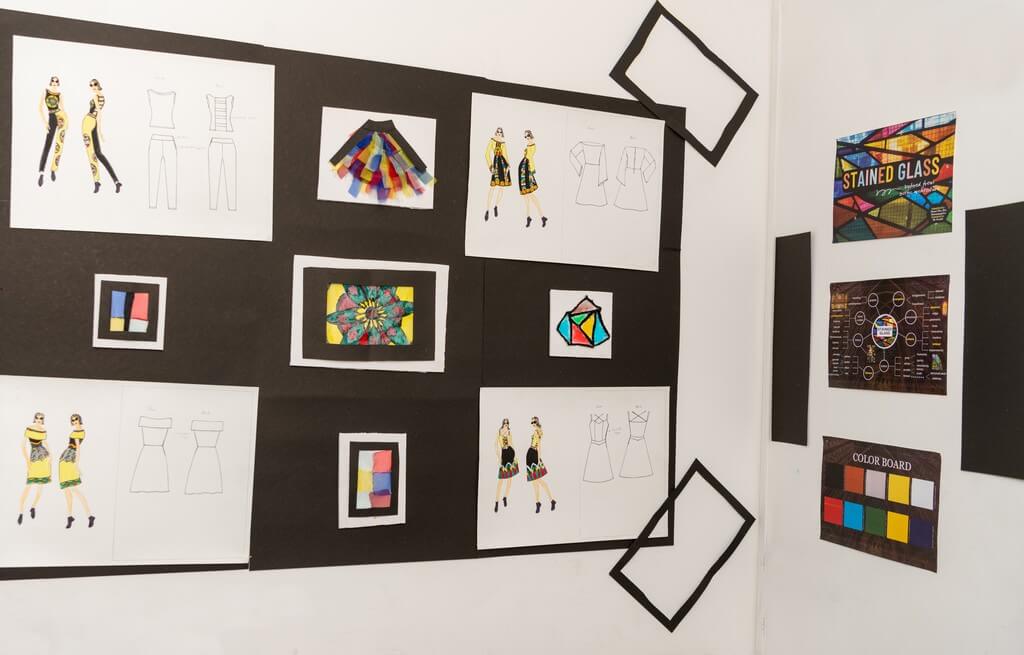
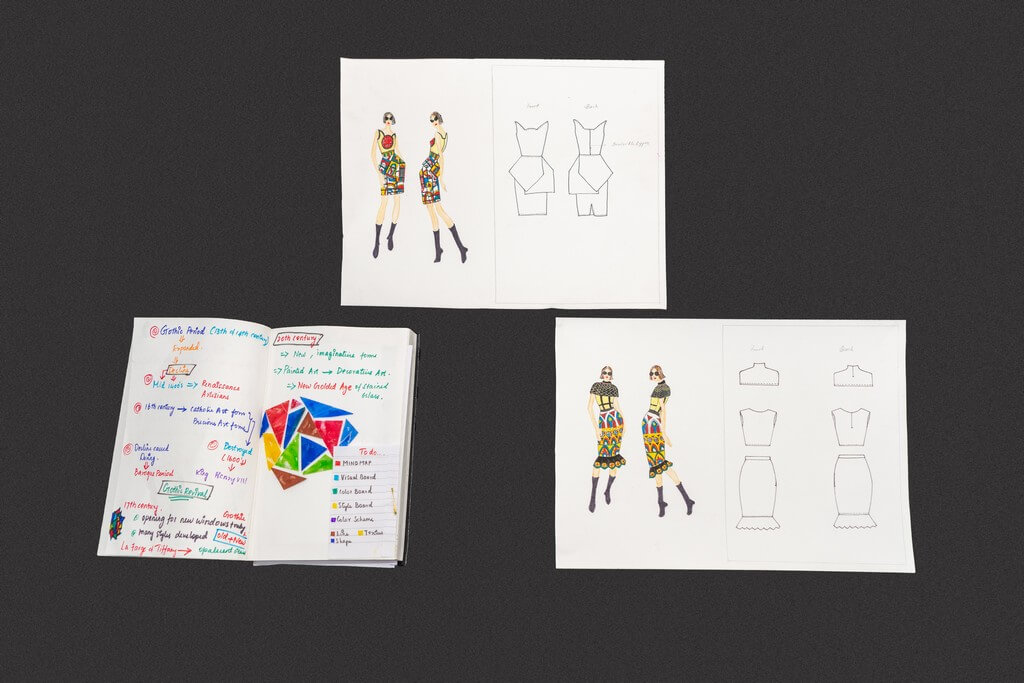
Kempe (Rakshith B., Yashaswini S.):
Rakshith and Yashaswini were inspired by the tradition of clothing in Ghana. What really fascinated them about it was the ability of clothes to communicate without words; colours as symbolisms expressing meaning through its usage. Based on the story of the traditional handcrafted clothing of Ghana which originated from a spider’s web-weaving technique, the team explored various weaving patterns on paper. Through the exploration of colours in their textile manipulations, they expanded and enquired their relevance in the contemporary fashion context. Formulating a womenswear winter collection, Rakshith and Yashaswini also worked on the traditional headgear and in expanding its meaning through the exploration of its application. The project concludes in a six-look fashion collection that incorporates colour symbolism and heritage in contemporary clothing practices.
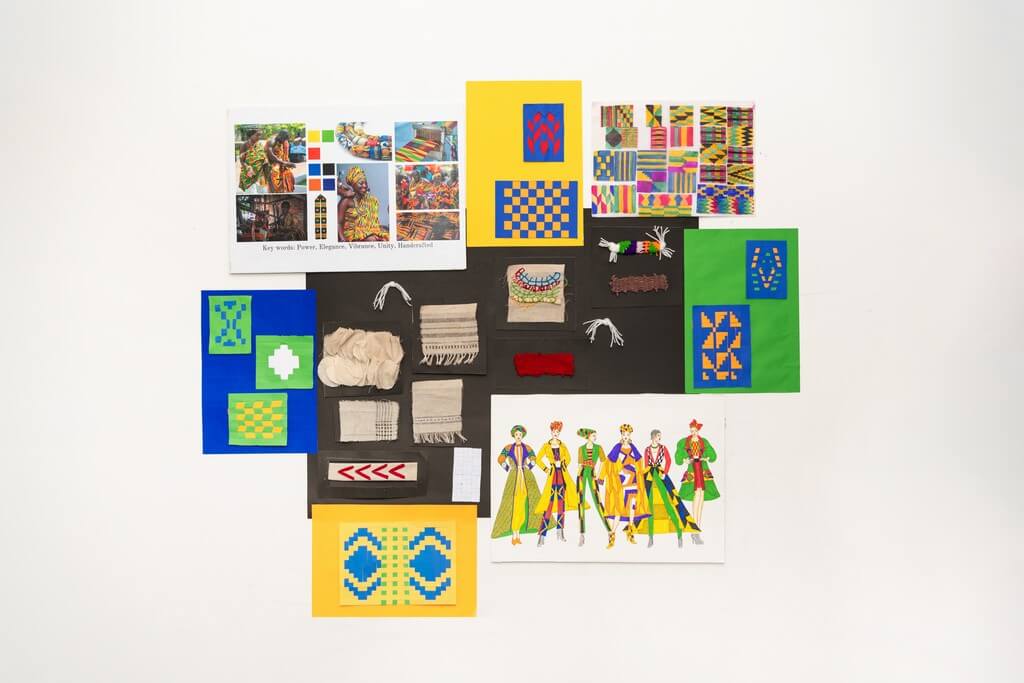
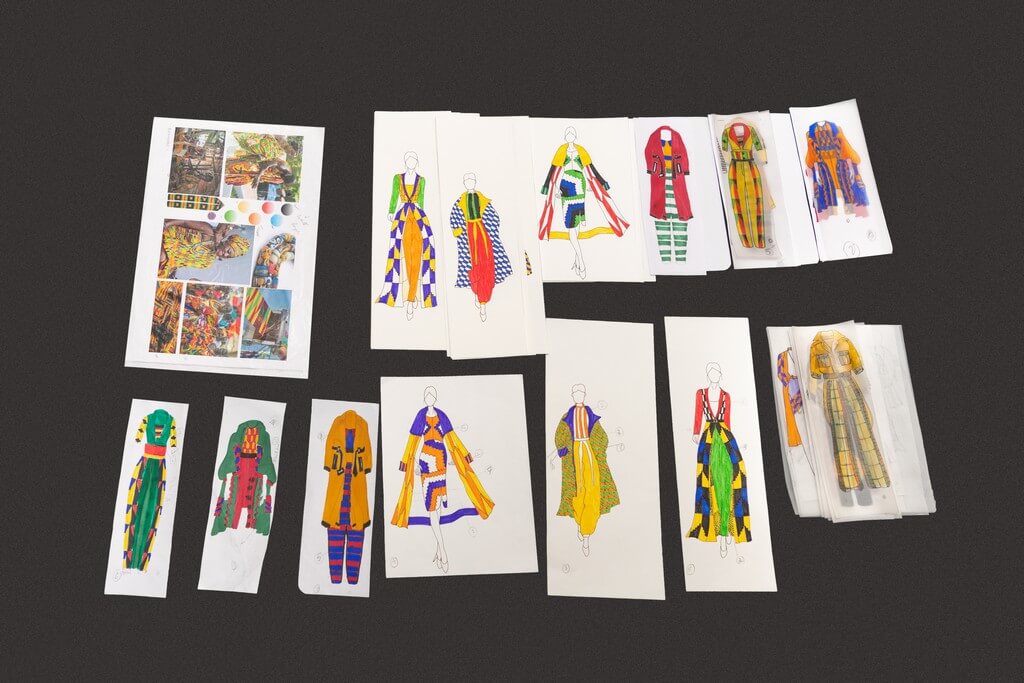
Greek Pottery (Anjum, Chaithra):
Anjum and Chaithra were fascinated by the ancient Grecian potteries; their form, structure and detailed stories as portrayed through paintings. Focusing on the art of pottery-making, the lines, shapes and stories depicted on these ancient Grecian artefacts spoke to them. Using the silhouette of the pottery to inform the pattern-cutting of their women’s ready-to-wear collection, the team experimented with hand-painting technique of geometric shapes derived from the potteries on textile surfaces. Fabric manipulation techniques such as cutwork as well as embroidery, motifs and textures inspired by the patterns on the pottery were explored as textile surface developments. The final fashion line-up that is composed of six looks pay an homage to a contemporary interpretation of these ancient historical artefacts.
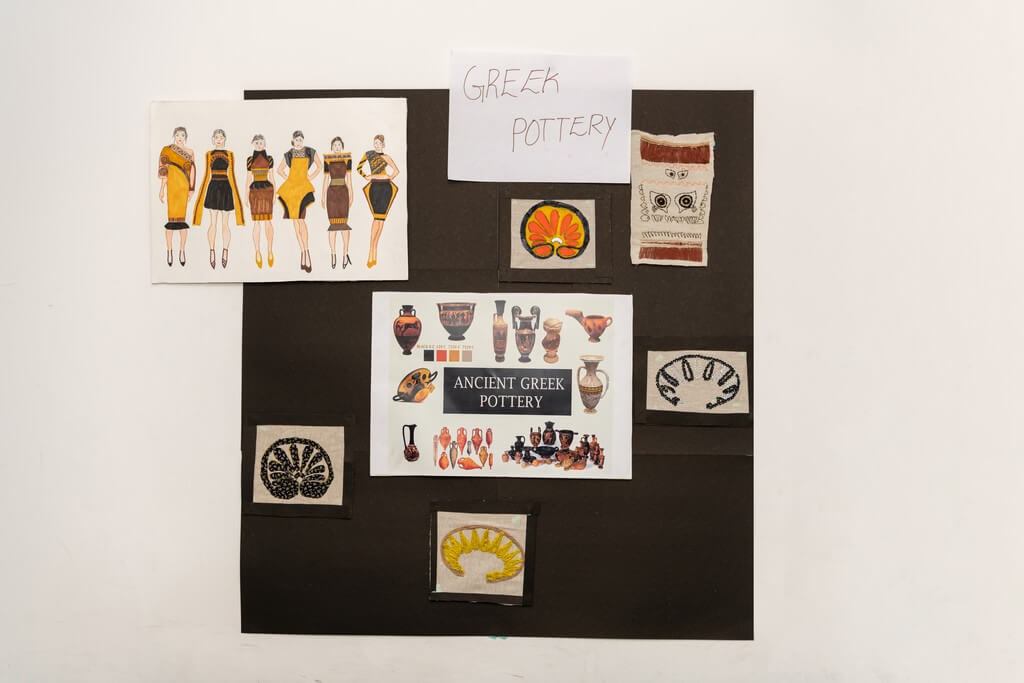
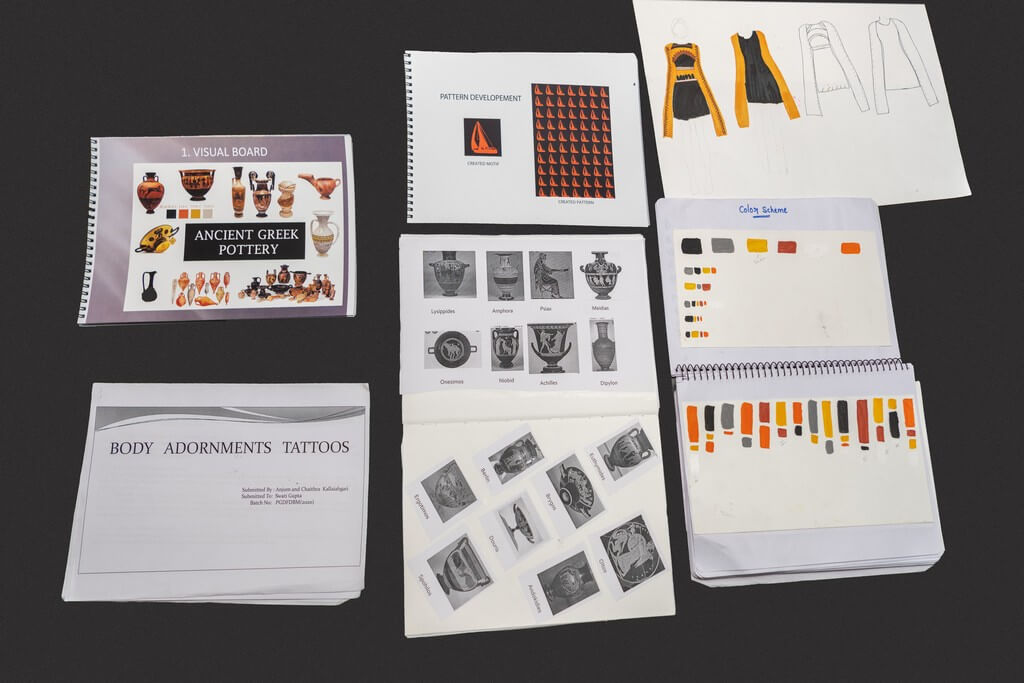
Great Mosque of Isfahan (Prarthan H.P., Visali N.):
Captivated by the iconic masterpiece of Persian architecture, Prarthan and Visali were drawn towards the grandeur and richness of the Great Mosque of Isfahan in Iraq. Conceptualising a bridal couture collection, the team explored floral motifs and geometric structure that is characteristic of Persian architecture in their design process. Working on techniques such as block printing and surface embellishment techniques including mirror-work, they developed textile surfaces for the fashion collection which try to capture the elegance and grandness of this cultural and religious space. The final collection was a bridal couture that is symbolic of the divinity of this historical, cultural and religious heritage.
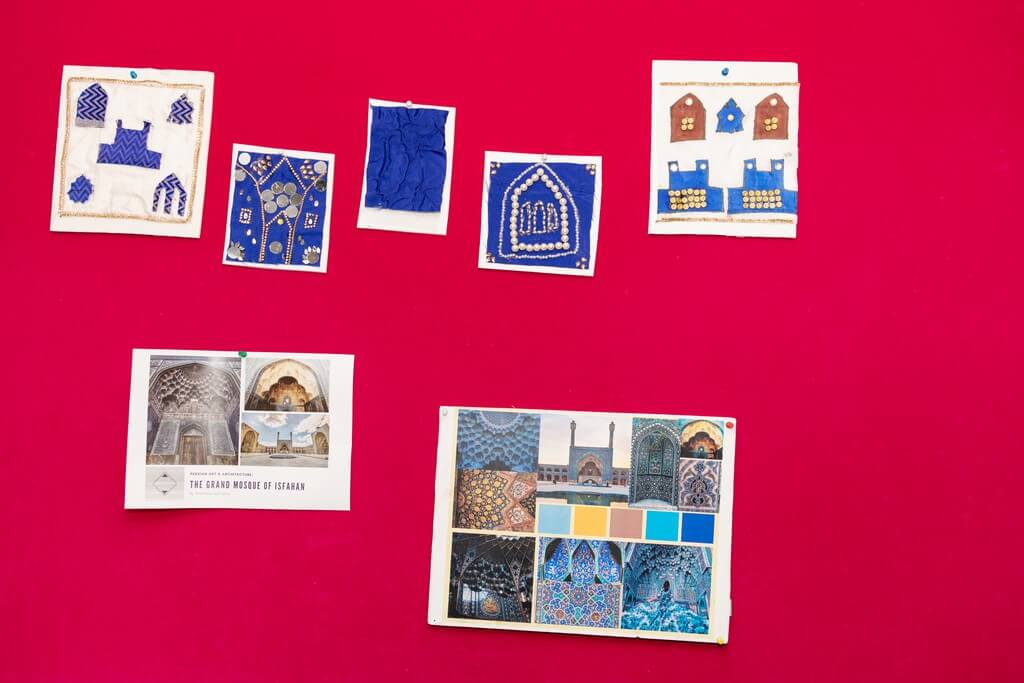
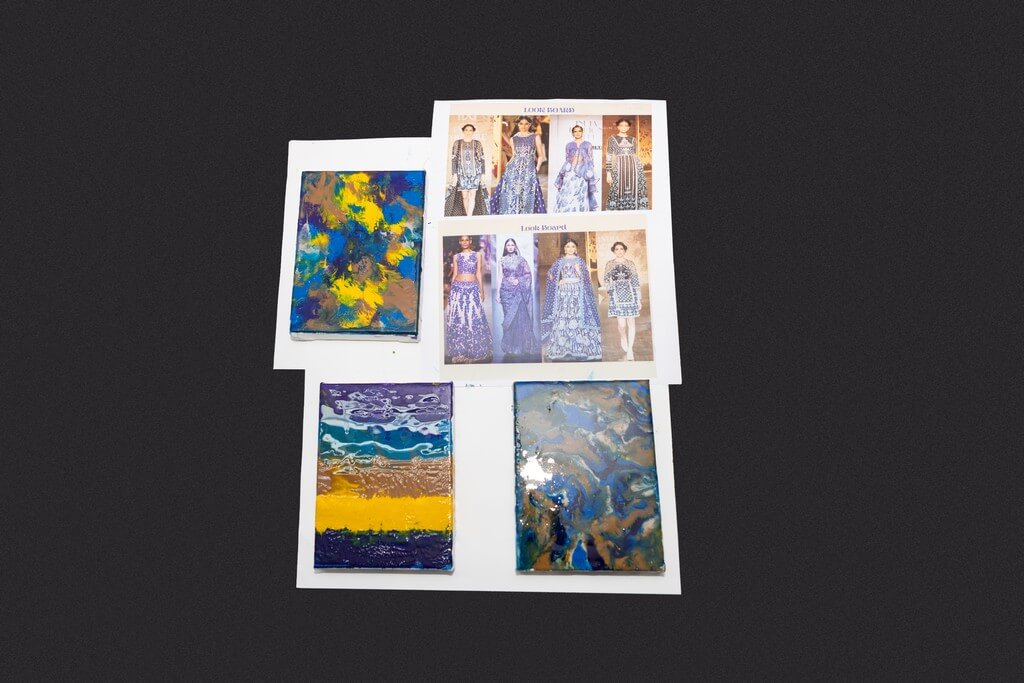
Chinese Mythological Dragon (Deepika Singh, Pretty Thomas):
Dragons are considered an auspicious element in Chinese culture and it holds special relevance in its mythology. This is what inspired Deepika and Pretty about this mythical creature – its symbolism and its role as an element of spirituality and divinity. Researching about the dragons, they were fascinated by their individual powers and how these creatures are an amalgamation of nine kinds of animals; nine being an auspicious number in Chinese culture. The team extracted various textures including fish-scale and crocodile, and tried to incorporate these vibrant and rich tactile elements into their design process. They experimented with various fabric manipulation techniques such as pleating and embroidery to explore the various textures, and in their final six-look fashion collection, they incorporated these dragon-inspired textures and forms into accessories such as bags and belts. Conceiving a cocktail-party evening-gown collection, Deepika and Pretty celebrate the aesthetic and cultural significance of this mythical creature through a contemporary lens, interrogating the role of attire as an agent of power and influence.
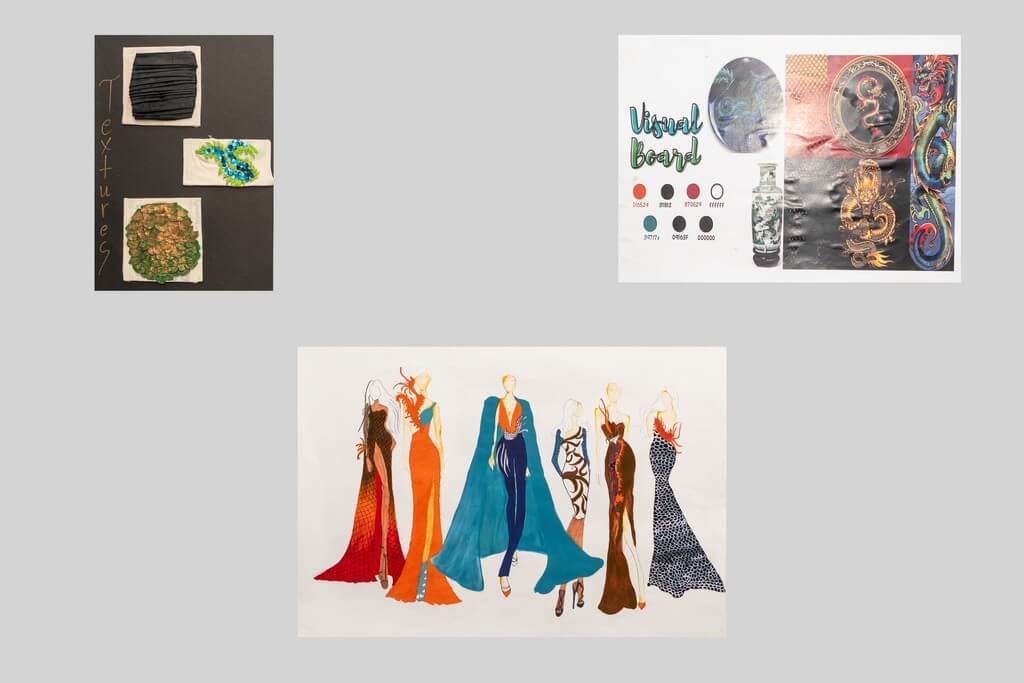
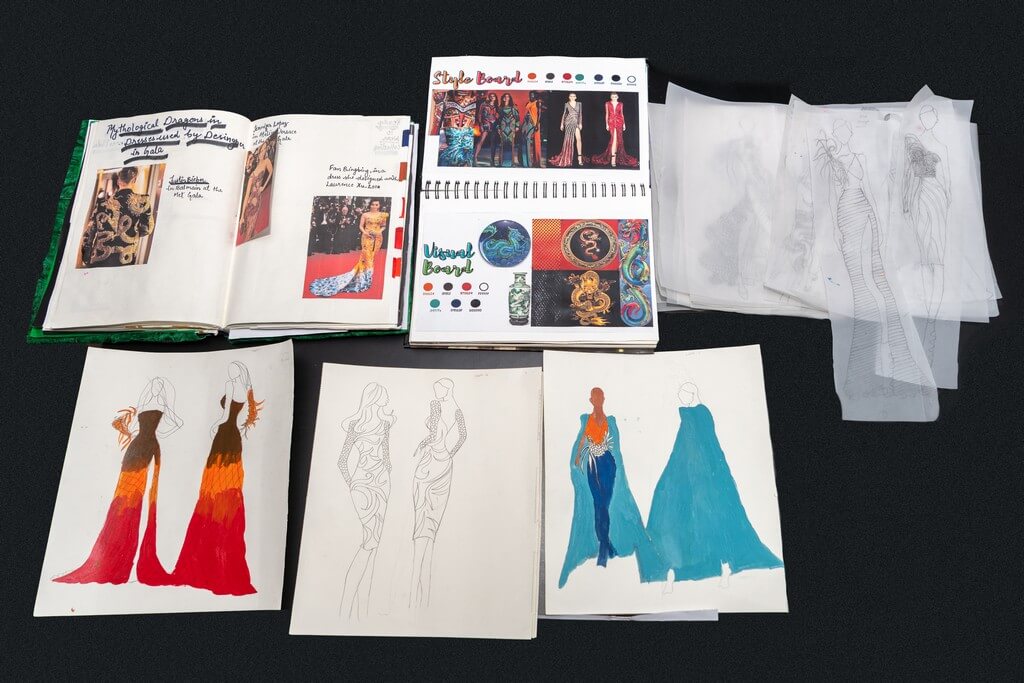
The fashion collection display done by the students of PGDFDBM represent an understanding and awareness of the evolving possibilities and potential of fashion. Through this project, they were able to critically analyse the scope of its application and explore its significance as an agent of change and thought. Moreover the presentation of their work demonstrates the responsive and adaptable nature of fashion, and its responsibility as a medium of social change.
#fashioncollection #artandcostumehistory #fashion #design #silhouette #textile #embroidery #readytowear #womenswear #couture #fashionbusinesscourses #fashionmanagement #jdinstitute #jdinstituteoffashiontechnologybangalore #newchapter #newnormal #riseagain #jdedge













